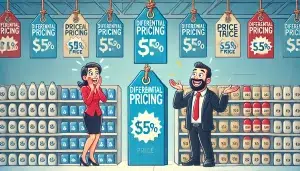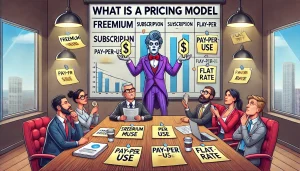
What is Penetration Pricing?
Penetration Pricing is a strategic approach where a company introduces a new product or service at a significantly lower price than competitors to attract customers quickly. This initial low price helps break through market entry barriers, making the product more appealing to cost-conscious consumers and driving rapid adoption. The goal is to build a solid customer base early, even if it means accepting short-term losses.
As the product gains popularity and brand loyalty grows, the company gradually increases prices, capitalizing on the established customer base. This strategy works best in markets with high competition, where gaining early market share can lead to long-term profitability.
When executed effectively, penetration pricing attracts customers and deters competitors from entering the market due to already established consumer loyalty.
Table of Contents
- What is Penetration Pricing?
- TL;DR: Penetration Pricing in a Nutshell
- Decoding the Penetration Pricing Puzzle
- How Penetration Pricing Works
- Pros and Cons: The Double-Edged Sword of Penetration Pricing
- Penetration Pricing vs. Skimming: The Battle of Pricing Strategies
- Case Studies in Penetration Pricing
- Myth Busters: Debunking Penetration Pricing Misconceptions
- My Penetration Pricing Adventure: A Personal Tale
- Future Trends
- A Day in the Life: Penetration Pricing in Action
- Pro Hacks: Mastering the Art of Penetration Pricing
- FAQs
- Useful Links
- The Final Countdown
TL;DR: Penetration Pricing in a Nutshell
- Penetration pricing is a strategy where you introduce products at a low price to quickly gain market share
- It’s ideal for new product launches or entering competitive markets
- Pros: Rapid customer acquisition, market share growth, and potential long-term loyalty
- Cons: Initial profit loss, risk of price wars, and potential quality perception issues
- Best used when you have the capacity to handle high volume and a plan to increase prices later
- Key to success: Balancing low initial prices with long-term profitability goals
Decoding the Penetration Pricing Puzzle

Imagine you’re at a bustling farmers’ market, and you spot a new vendor selling the juiciest, most colorful apples you’ve ever seen. But here’s the kicker – they’re priced at half what the other stalls are charging. That, my friend, is penetration pricing in action.
So, what is penetration pricing? It’s a bold marketing strategy where a company sets a low initial price for a product or service to rapidly attract customers and gain a large market share.
Once they’ve hooked you with their irresistible deals, they gradually increase prices over time. It’s like the e-commerce equivalent of “the first taste is free” – except, you know, legal and less sketchy.
This strategy is particularly effective for small to medium-sized e-commerce businesses looking to make a splash in a competitive market.
It’s your secret weapon to stand out in a sea of established players, much like that apple vendor at the farmers’ market.
The Art of the Deal: How Penetration Pricing Works
Now that we’ve got the basics down, let’s dive into the nitty-gritty of how penetration pricing actually works. It’s not just about slashing prices willy-nilly – there’s a method to the madness.
- Set the Stage: Identify your target market and analyze competitor pricing.
- Make a Splash: Launch your product at a significantly lower price than competitors.
- Ride the Wave: As demand increases, gradually raise prices.
- Stick the Landing: Stabilize prices at a profitable level while maintaining customer loyalty.
Think of it like surfing. You paddle out (market research), catch a big wave (low prices), ride it to shore (increasing demand), and then stand tall on your board (stabilize prices). Cowabunga, dude! 🏄♂️
The Secret Sauce: Key Ingredients for Success
- Know Your Costs: Ensure you can sustain the initial low prices without going bankrupt.
- Plan for Scale: Be prepared to handle a sudden influx of orders.
- Timing is Everything: Choose the right moment to start raising prices.
- Customer Communication: Keep your audience informed about any price changes.
Pros and Cons: The Double-Edged Sword of Penetration Pricing
Like that suspiciously cheap all-you-can-eat sushi buffet, penetration pricing comes with its own set of pros and cons. Let’s break it down:
Pros: The Sweet Side of the Deal
- Rapid Market Entry: Zoom past competitors like you’re in the Fast & Furious franchise.
- Customer Acquisition: Attract bargain hunters like bees to honey.
- Market Share Growth: Gobble up a bigger slice of the pie before your competitors can say “discount.”
- Brand Awareness: Get your name out there faster than you can say “viral TikTok dance.”
- Economies of Scale: As production volumes increase, costs per unit often decrease.
Cons: The Potential Pitfalls
- Initial Profit Loss: You might be eating ramen for a while (but hey, ramen is delicious!).
- Price Wars: Competitors might retaliate, leading to a race to the bottom.
- Quality Perception: Some might think your low prices mean low quality (prove ’em wrong!).
- Difficulty Raising Prices: Customers might revolt when you try to increase prices later.
- Cash Flow Challenges: High volume, low margins can strain your resources.
Penetration Pricing vs. Skimming

In the red corner, we have penetration pricing. In the blue corner, price skimming. Let’s watch these two duke it out!
| Aspect | Penetration Pricing | Price Skimming |
|---|---|---|
| Initial Price | Low | High |
| Target Market | Mass market, price-sensitive consumers | Early adopters, less price-sensitive |
| Market Share Goal | Rapid acquisition | Gradual growth |
| Profit Timeline | Long-term | Short-term |
| Product Lifecycle | Early stage | Introduction stage |
| Risk Level | Higher initial investment | Lower initial risk |
Which strategy wins? It depends on your product, market, and business goals.
Choose wisely, young padawan!
Case Studies in Penetration Pricing
Let’s take a look at some companies that have wielded the penetration pricing sword with finesse:

Netflix: Streaming into Success
Remember when streaming was just a twinkle in the internet’s eye? Netflix sure does, and they rode that twinkle all the way to the bank with a masterful penetration pricing strategy.
Back in 2007, Netflix introduced its streaming service as a free add-on to its DVD-by-mail subscribers. Talk about penetration pricing on steroids – it was literally free! This move allowed Netflix to quickly build a large user base familiar with streaming content.
In 2010, Netflix launched its first streaming-only plan at a mere $7.99 per month. Compare that to cable TV packages of the time, which often ran $50 or more. At this price point, Netflix was practically irresistible to cost-conscious consumers looking for entertainment options.
This low price allowed Netflix to:
- Rapidly acquire customers
- Build brand loyalty
- Collect valuable data on viewing habits
- Invest in original content
As Netflix’s popularity grew, so did its pricing power. Here’s a quick timeline of their price increases:
- 2011: $7.99
- 2014: $8.99 (new subscribers only)
- 2015: $9.99
- 2017: $10.99
- 2019: $12.99
- 2020: $13.99
- 2022: $15.49
Despite these price hikes, Netflix retained many of its customers. Why? Because by the time prices increased, users were hooked on the service, its original content, and the convenience it offered.
Netflix’s penetration pricing strategy helped it grow from 21.5 million subscribers in 2011 to over 230 million in 2023. Talk about streaming success!
Key Takeaways from Netflix’s Strategy:
- Start low (or even free) to build a user base quickly
- Use the growth period to improve your product and create unique value (like original content)
- Gradually increase prices as your brand becomes indispensable
- Communicate price changes clearly and justify them with improved services
Remember, Netflix didn’t just price low and hope for the best. They combined penetration pricing with continuous innovation, quality content creation, and stellar user experience. It’s a reminder that penetration pricing works best as part of a holistic business strategy.
So, next time you’re binge-watching your favorite show, take a moment to appreciate the penetration pricing strategy that made it all possible. Who knew pricing could be so… entertaining?
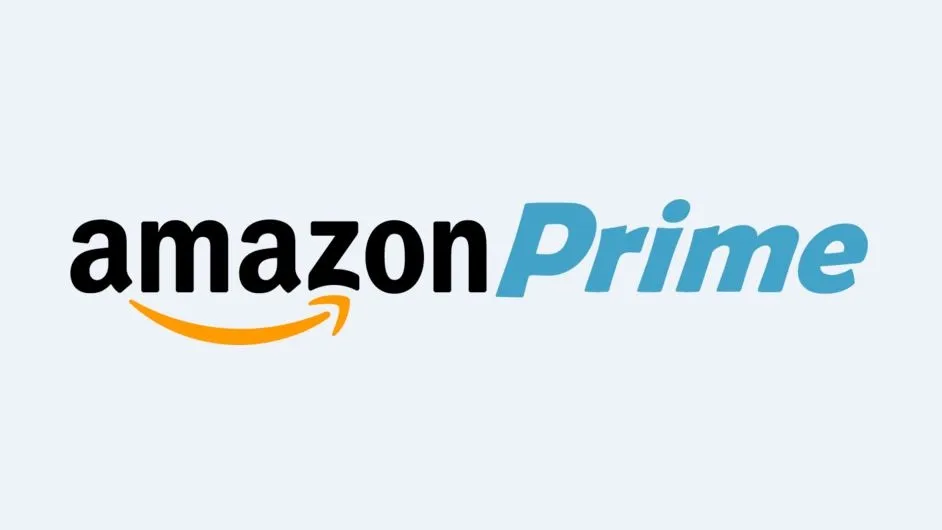
Amazon Prime: The “Prime” Example of Penetration Pricing
When it comes to penetration pricing in e-commerce, Amazon Prime is the 800-pound gorilla in the room. Let’s dive into how this retail giant used this strategy to create one of the most successful subscription services in history.
Amazon introduced Prime in 2005 at an initial price of $79 per year. At the time, the main benefit was free two-day shipping on eligible purchases. For frequent Amazon shoppers, this was a no-brainer – the subscription could pay for itself in saved shipping costs within a few orders.
But Amazon’s strategy went beyond just offering a good deal. Here’s how they made penetration pricing work:
Low Initial Price: At $79/year (about $6.58/month), Prime was priced well below the perceived value of unlimited free 2-day shipping.Continuous Value Addition: Amazon didn’t rest on its laurels. They kept adding services to Prime:
- 2011: Amazon Instant Video (now Prime Video) added
- 2014: Prime Music launched
- 2015: Prime Day shopping event introduced
- 2016: Prime Reading added
- And more…
Gradual Price Increases: As the value of Prime increased, so did its price:
- 2014: Increased to $99/year
- 2018: Raised to $119/year
- 2022: Increased to $139/year
Creating Habits: Free 2-day shipping encouraged customers to turn to Amazon first for their shopping needs, creating a habit-forming loop.Ecosystem Lock-in: As customers invested more in Amazon’s ecosystem (Kindle, Echo devices, etc.), the value of Prime increased, making price increases more palatable.
The results? Amazon Prime has been a phenomenal success:
- 2013: 20 million members
- 2018: 100 million members
- 2023: Over 200 million members worldwide
Key Takeaways from Amazon’s Strategy:
- Start with a core value proposition at a low price
- Continuously add value to justify future price increases
- Use the service to change customer behavior in your favor
- Create an ecosystem that increases switching costs for customers
- Raise prices gradually as perceived value increases
Amazon’s use of penetration pricing with Prime is a masterclass in customer acquisition and retention. They didn’t just offer a cheap service; they created an ever-expanding ecosystem of value that keeps customers hooked year after year.
So, the next time you’re getting a package delivered in two days (or even the same day) for “free,” remember – you’re experiencing the long-term effects of a brilliant penetration pricing strategy. Jeff Bezos thanks you for your participation!
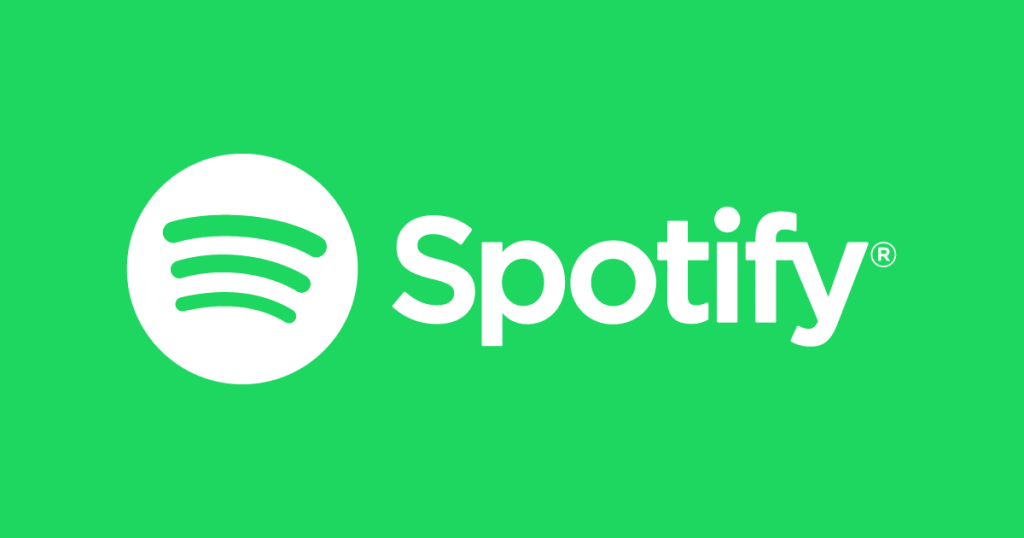
Spotify: Orchestrating Success with Freemium Penetration Pricing
When it comes to innovative penetration pricing strategies, Spotify has composed a masterpiece. Let’s tune into how this Swedish startup disrupted the music industry and grew into a global streaming giant.
Spotify launched in 2008 with a unique twist on penetration pricing: the freemium model. Here’s how they orchestrated their success:
Free, Ad-Supported Tier:
- Offered unlimited music streaming for free (with ads)
- Lowered the barrier to entry to zero, attracting a massive user base
- Served as a “try before you buy” option, familiarizing users with the platform
Low-Cost Premium Tier:
- Introduced at just $9.99/month (£9.99 in the UK)
- Offered ad-free listening, offline mode, and higher quality audio
- Priced competitively against buying individual albums or songs
Gradual Feature Differentiation:
- Over time, Spotify introduced more limitations to the free tier
- Enhanced premium features to increase the value proposition of paid subscriptions
Strategic Partnerships:
- Teamed up with telecom companies to offer bundled subscriptions
- Partnered with student organizations to offer discounted student plans
Family Plan Introduction:
- Launched in 2014, allowing up to six accounts for $14.99/month
- Increased the value proposition for households, reducing per-user acquisition costs
The Results? Spotify’s strategy has paid off handsomely:
- 2011: 1 million paid subscribers
- 2015: 20 million paid subscribers
- 2020: 100 million paid subscribers
- 2023: Over 200 million paid subscribers out of 515 million total users
Key Takeaways from Spotify’s Strategy:
- Use a free tier to rapidly build a large user base
- Offer a paid tier with clear, valuable benefits at a competitive price
- Gradually increase the value gap between free and paid tiers
- Leverage partnerships to reach new user segments
- Introduce group or family plans to increase overall subscriber numbers
Spotify’s approach to penetration pricing shows that sometimes, the best price is free – at least to start. By offering a free, ad-supported tier, Spotify was able to reach a massive audience quickly. The low-cost premium tier then provided an easy upgrade path for users already hooked on the service.
This strategy wasn’t without challenges. Spotify had to balance user growth with profitability, negotiate complex licensing deals with record labels, and fend off competition from tech giants like Apple and Amazon. But their commitment to their freemium model has paid off, making them the world’s largest music streaming service.
So, the next time you’re jamming to your favorite playlist without reaching for your wallet, remember – you’re experiencing a penetration pricing strategy that hit all the right notes. Daniel Ek and the Spotify team thank you for tuning in!
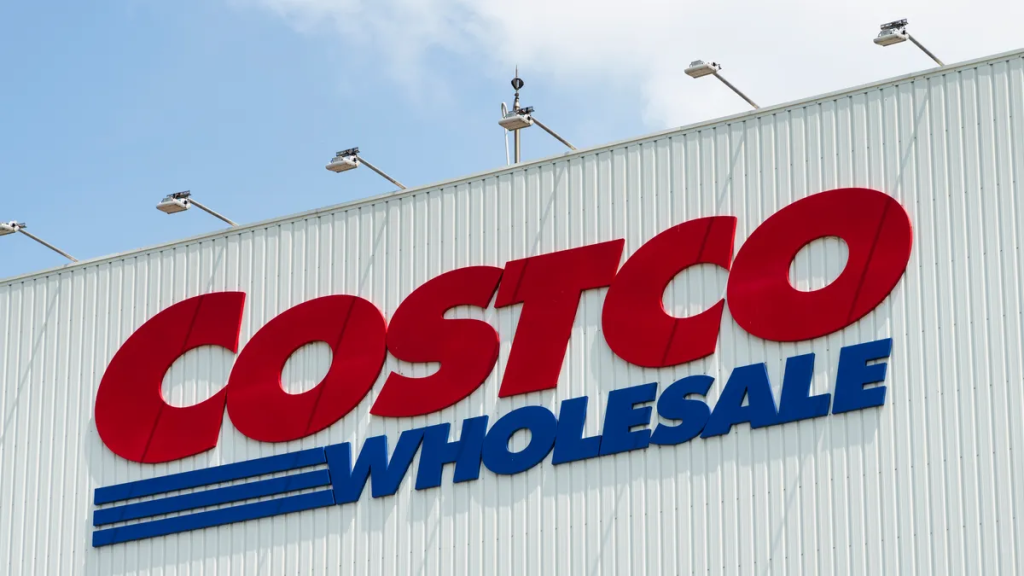
Costco: Bulk Buying into Penetration Pricing Success
When you think of penetration pricing, a warehouse club might not be the first thing that comes to mind. But Costco has masterfully applied these principles to create a retail empire. Let’s unpack how this bulk-buying behemoth has used a unique spin on penetration pricing to build customer loyalty and drive profitable growth.
Costco’s strategy revolves around two key elements:
Low-Margin Products:
- Costco caps its markup on products at 14% (compared to 25-50% at typical retailers)
- Many items are sold at or near cost, especially popular items like rotisserie chickens ($4.99) and hot dog + soda combos ($1.50 since 1985!)
Membership Fees:
- Annual membership fees start at $60 for Gold Star and $120 for Executive
- These fees provide a steady revenue stream and offset the low margins on products
Here’s how Costco makes this penetration pricing-inspired strategy work:
Value Proposition:
- Low prices attract price-sensitive consumers
- Bulk sizing provides additional perceived value
Loss Leaders:
- Some products are sold at a loss to drive foot traffic and membership sign-ups
- The famous $4.99 rotisserie chicken reportedly costs Costco $30-40 million per year in potential profit
Limited Selection:
- Costco typically stocks only 4,000 SKUs (compared to 30,000+ at typical supermarkets)
- This allows for bulk purchasing and lower prices, while also simplifying the shopping experience
Quality Focus:
- Despite low prices, Costco focuses on quality products, often offering premium brands
- This builds trust and encourages repeat visits
Membership Renewal:
- Low prices and quality products drive high membership renewal rates (90% in the U.S. and Canada)
- Membership fees account for about 75% of Costco’s operating profit
The Results? Costco’s strategy has led to impressive growth:
- 1983: First Costco warehouse opened
- 2000: 312 warehouses worldwide
- 2023: Over 850 warehouses worldwide, 123 million members
Key Takeaways from Costco’s Strategy:
- Use low prices to attract customers, but find alternative revenue streams (like memberships) to ensure profitability
- Create a strong value proposition that goes beyond just low prices
- Use loss leaders strategically to drive traffic and loyalty
- Focus on quality to build trust and encourage repeat business
- Simplify the shopping experience to reduce costs and pass savings to customers
Costco’s approach shows that penetration pricing principles can be applied creatively in retail settings. By combining low margins with membership fees, Costco created a loyal customer base that’s willing to pay for the privilege of access to great deals.
This strategy isn’t without challenges. Costco must continually prove its value to maintain high renewal rates, and it’s vulnerable to economic downturns that might make customers hesitant to pay membership fees. However, their consistent growth and loyal customer base prove the effectiveness of their approach.
So, the next time you’re pushing a giant cart filled with bulk purchases and enjoying a $1.50 hot dog, remember – you’re experiencing a penetration pricing-inspired strategy that’s been supersized for success. Jim Sinegal and the Costco team thank you for your membership!
These companies didn’t just use penetration pricing; they mastered it.
They’re like the Avengers of pricing strategies, each with their own superpowers!
Myth Busters: Debunking Penetration Pricing Misconceptions
Time to put on our detective hats and bust some myths! 🕵️♀️
- Myth: Penetration pricing always leads to long-term success.
Truth: It’s a tool, not a magic wand. Success depends on execution and market conditions. - Myth: You can never raise prices after using penetration pricing.
Truth: You can, but it requires careful planning and communication. - Myth: Penetration pricing is only for new products.
Truth: It can also be used for entering new markets or revitalizing existing products. - Myth: Low prices mean low quality.
Truth: Price doesn’t always reflect quality. It’s up to you to prove your value! - Myth: Penetration pricing is illegal.
Truth: It’s legal as long as you’re not pricing below cost to drive out competition (that’s predatory pricing, and it’s a no-no).
Future Trends: The Evolution of Penetration Pricing
As we gaze into our crystal ball (which looks suspiciously like a computer screen), what does the future hold for penetration pricing in e-commerce?
- AI-Driven Pricing: Algorithms will help businesses fine-tune their penetration pricing strategies in real-time.
- Personalized Penetration Pricing: Tailored introductory prices based on individual customer data and behavior.
- Subscription Model Integration: More businesses will combine penetration pricing with subscription models for long-term customer retention.
- Eco-Friendly Focus: Penetration pricing may be used to promote sustainable products and capture environmentally conscious markets.
- Virtual and Augmented Reality: As these technologies grow, penetration pricing could be used to attract early adopters in new digital marketplaces.
Remember, the future is not set in stone. It’s up to innovative e-commerce entrepreneurs like you to shape it!
My Experience with Penetration Pricing

Let me take you on a little journey through my own penetration pricing adventure. Picture this: It’s 2019, and I’ve just launched my e-commerce store, “Eco Essentials,” selling sustainable household products. The market is crowded with big players, and I’m sweating bullets (and not just because I’ve switched to natural deodorant).
I decide to go all-in on penetration pricing for our flagship product: bamboo toothbrushes. I price them at $2 each – half the price of most competitors. The first month is absolute chaos. Orders flood in faster than I can pack them. I’m working 18-hour days, my living room looks like a bamboo forest exploded, and I’m pretty sure I’m developing carpal tunnel from all the packaging.
But then, something magical happens. Word spreads. Eco-influencers start raving about the “amazing affordable eco-friendly toothbrushes.” Sales skyrocket. By month three, we’ve captured 10% of the online market share for bamboo toothbrushes.
Now comes the tricky part: raising prices. I communicate transparently with our customers, explaining that the initial low prices were a “thank you” for supporting a new eco-friendly brand. We gradually increase prices over the next six months, and to my relief, most customers stick around. They’ve fallen in love with our brand ethos and product quality.
Today, “Eco Essentials” is a thriving business with a loyal customer base and a full range of sustainable products. We’ve expanded into reusable shopping bags, metal straws, and even compostable phone cases. The moral of the story? Penetration pricing can be a wild ride, but if you hold on tight and plan your route, it can take your e-commerce business to new heights!
Just remember: stock up on coffee, prepare for some sleepless nights, and maybe invest in a good massage therapist. Trust me, your future successful self will thank you!
Pro Hacks: Mastering the Art of Penetration Pricing
Ready to level up your penetration pricing game? Here are some pro tips to help you navigate the choppy waters of competitive pricing:
- Know Your Break-Even Point: Calculate the absolute minimum price you can sustain without losing money.
- Set a Clear Exit Strategy: Plan how and when you’ll transition from penetration pricing to your long-term pricing strategy.
- Leverage FOMO: Create a sense of urgency with limited-time offers to drive initial sales.
- Bundle Smartly: Combine low-priced items with higher-margin products to boost overall profitability.
- Monitor Competitor Reactions: Use Pricefy to stay agile and be prepared to adjust your strategy if competitors retaliate.
- Focus on Customer Retention: Use the initial low prices to build a loyal customer base that will stick around when prices increase.
- Communicate Value: Emphasize the quality and benefits of your product to justify future price increases.
- Use Data Analytics: Continuously analyze sales data to optimize your pricing strategy in real-time.
Remember, grasshopper, the path to penetration pricing mastery is paved with data, strategy, and a dash of chutzpah!
Remember, in the world of e-commerce, knowledge is power. And maybe also money. But definitely power!
FAQs
Got questions? We’ve got answers!
FAQs – General Understanding of Penetration Pricing
Q: What is meant by penetration pricing?
A: Penetration pricing is a strategy where a company sets a low initial price for a product or service to quickly attract customers and gain a large market share. The aim is to penetrate the market rapidly.
Q: What is penetration pricing in business?
A: In business, penetration pricing is used to quickly establish a foothold in a new market or to launch a new product by offering it at a lower price than competitors, often at the cost of initial profitability.
Q: What is a penetration pricing example?
A: A classic example is Netflix’s initial low subscription rates when they launched their streaming service, which helped them quickly gain market share before gradually increasing prices.
Q: What is the advantage of penetration pricing?
A: The main advantages include rapid market entry, quick customer acquisition, increased market share, and the potential to create brand loyalty early on.
Q: What is penetration pricing designed to accomplish?
A: Penetration pricing is designed to quickly capture a large portion of the market, discourage new competitors from entering, and establish a strong customer base for future price increases.
Q: What is penetration pricing in marketing?
A: In marketing, penetration pricing is a strategy used to attract buyers by offering lower prices than competitors. It’s often part of a broader marketing mix to introduce a new product or enter a new market.
Q: What is penetration pricing simple definition?
A: Simply put, penetration pricing is setting a low initial price to rapidly attract a large number of customers and capture a sizeable market share.
FAQs – Real-Life Examples and Company Use
Q: What companies use penetration pricing?
A: Companies like Amazon (with Prime), Uber (initial low fares), and Spotify (freemium model) have successfully used penetration pricing strategies.
Q: Does Netflix use penetration pricing?
A: Yes, Netflix initially used penetration pricing when launching its streaming service, offering low subscription rates to attract users before gradually increasing prices.
Q: Does Coca-Cola use penetration pricing?
A: Historically, Coca-Cola has used penetration pricing when entering new markets, offering lower prices to gain market share before adjusting to market norms.
Q: Does Starbucks use penetration pricing?
A: While not typically associated with penetration pricing, Starbucks has used elements of this strategy when entering new international markets.
Q: Does Target use penetration pricing?
A: Target often uses a form of penetration pricing with its private label brands, offering them at lower prices to compete with national brands.
Q: What is IKEA penetration pricing?
A: IKEA uses a form of penetration pricing by offering basic versions of products at very low prices to attract customers, who often end up buying additional items.
Q: What is Nestle penetration pricing strategy?
A: Nestle has used penetration pricing when introducing new products or entering new markets, particularly in developing countries.
FAQs – Advantages and Disadvantages
Q: What are the advantages and disadvantages of price penetration?
A: Advantages include rapid market entry, increased market share, and customer acquisition. Disadvantages include initial lower profits, potential price wars, and challenges in raising prices later.
Q: What is the risk associated with penetration pricing?
A: Risks include initial financial losses, difficulty in raising prices later, potential damage to brand image, and triggering price wars with competitors.
Q: Is penetration pricing effective?
A: Penetration pricing can be very effective for gaining market share quickly, but its long-term effectiveness depends on the ability to retain customers when prices increase.
Q: Is penetration pricing good?
A: Penetration pricing can be good for rapidly entering a market or launching a new product, but it’s not suitable for all situations and comes with risks that need to be carefully managed.
FAQs – Strategy and Implementation
Q: When to use penetration pricing?
A: Use penetration pricing when entering a competitive market, launching a new product, or when you have the capacity to handle high sales volumes and can benefit from economies of scale.
Q: When is penetration pricing used?
A: It’s typically used during the introduction stage of a product’s life cycle, in highly competitive markets, or when entering new geographical markets.
Q: When would penetration pricing be used?
A: Penetration pricing would be used when the goal is to quickly gain market share, when the product has high price elasticity, or when there’s potential for significant cost reduction through economies of scale.Q: When is penetration pricing strategy most appropriate?
A: It’s most appropriate in markets with high price elasticity of demand, where customers are price sensitive, and when there’s potential for high sales volume and economies of scale.
Q: When not to use penetration pricing?
A: Avoid penetration pricing when you can’t sustain initial losses, when it could damage your brand image, or in markets where customers associate price with quality.
Q: What is a slow penetration strategy?
A: A slow penetration strategy involves setting a relatively low price but with limited promotion. It’s used when market size is large, market awareness is high, but price sensitivity is also high.
Q: What is a rapid penetration pricing strategy?
A: Rapid penetration involves setting a low price and spending heavily on promotion to gain market share as quickly as possible. It’s used when the market is large but price-sensitive, and competition is intense.
Q: Which segment of customers are targeted in penetration pricing?
A: Penetration pricing typically targets price-sensitive customers and early adopters who are willing to try new products or switch brands for a better deal.
Q: Which of the following is a key benefit of penetration pricing?
A: A key benefit is the rapid acquisition of market share, which can lead to economies of scale and a strong competitive position.
FAQs – Comparisons and Related Concepts
Q: What is the difference between predatory and penetration pricing?
A: Penetration pricing aims to gain market share by offering low prices that are still above cost. Predatory pricing involves pricing below cost to drive out competition and is generally illegal.
Q: What is a real-life example of price lining?
A: A real-life example of price lining is a clothing store offering t-shirts at three distinct price points – budget, mid-range, and premium – to cater to different customer segments.
Q: What is penetration pricing vs. skimming pricing?
A: Penetration pricing sets low initial prices to gain market share, while skimming pricing sets high initial prices to maximize profits from early adopters before lowering prices over time.
FAQs – Market Penetration
Q: What is the formula for market penetration pricing?
A: There’s no universal formula, but generally, it involves setting prices lower than competitors while ensuring costs are covered. The specific price depends on factors like costs, competitor prices, and target market share.
Q: What does market penetration pricing mean?
A: Market penetration pricing means setting prices low to rapidly increase market share and sales volume, often at the expense of short-term profits.
Q: How to get penetration rate?
A: Penetration rate is calculated by dividing the number of customers who have purchased your product by the total number of potential customers in the market, then multiplying by 100 to get a percentage.
Q: Where is market penetration pricing used?
A: Market penetration pricing is used in competitive markets, for new product launches, when entering new geographical markets, or in situations where increasing sales volume can lead to reduced costs.
Q: Why is market penetration pricing used?
A: It’s used to quickly gain market share, discourage competition, increase brand awareness, and potentially benefit from economies of scale.
FAQs – Legal and Ethical Considerations
Q: Is penetration pricing illegal?
A: Penetration pricing is generally legal as long as it’s not predatory (pricing below cost to drive out competition). However, businesses should be aware of antitrust laws and avoid any practices that could be seen as anti-competitive.
Useful Links
Wikipedia: What is Penetration Pricing
Investopedia: Penetration Pricing Definition, Examples, and How to Use It
Corporate finance institute: Penetration Pricing
The Final Countdown: Wrapping Up Penetration Pricing
Alright, e-commerce warriors, we’ve journeyed through the land of penetration pricing, battled myths, and emerged victorious (and hopefully a little wiser).
Let’s recap the key points:
- Communication is key when transitioning from penetration pricing
- Penetration pricing is a powerful tool for gaining market share quickly.
- It’s not without risks – use it wisely and with a clear long-term strategy.
- Success depends on balancing low initial prices with long-term profitability goals.

